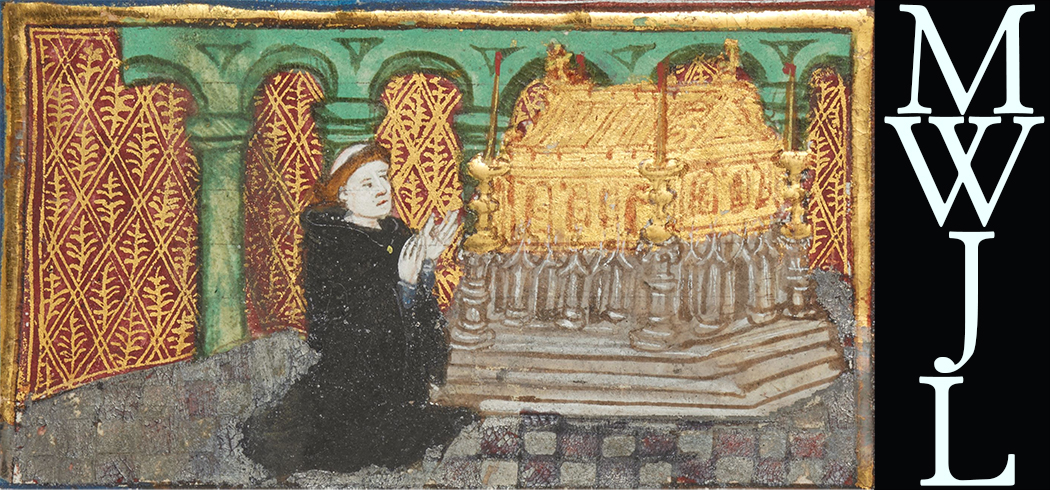 The Testament of John Lydgate:
British Library Additional 34193 Verses
The Testament of John Lydgate:
British Library Additional 34193 Verses
HomeAbout the ArchiveAbout John LydgateWorksManuscriptsAbout this ManuscriptEditorial ApparatusContactVisualization

Folio 226 Recto
Compare Witnesses: •
Gynnynge and graunted of ałł gostely gladnesse •
Evon next in odur his Eternytas •
Tokyne and Sygne of eternałł brightnesse •
S set for sanitas Socurre agayne ałł Sykenesse •
V for vbertas of spirituałł plente •
S for suavitas from whom comith ałł suettenesse •
E signifiethe euerlastynge Suffisaunce •
S oure Sauacion wenne we shałł haue wende •
V his fyve woundis that made vs aquitavnce •
S for the Sacrement wiche eche day we see •
In forme of brede to Saffe vs from michaunce •
When we deuoutely receyve it on oure knee •
I for Iacob H for Abreham •
The lyfe desendynge be generacion •
C stont for cryst that fro hevyn came •
Borne of a maydon for oure redempcion •
Therpe title tocon of his passion •
When he whas naylied vpon the rode tre •
O blessied Ihesu do remyssion •
Notes
-
Here the scribe has started the line with the initial two words of verse nineteen (although without the confusion regarding "g" seen on the page for f.225 verso.) beore correcting themselves and continuing with the rest of verse twenty-two. There is a mark next to the initial "C" that may be meant to indicate the error, but it was never corrected. ↩
-
The fifth glyph is either an e or an o, but the face it appears there is a line through it leading to the following "a" suggests that it should be "e." This suggests that the gylph in the exemplar had a suspended "r." ↩











